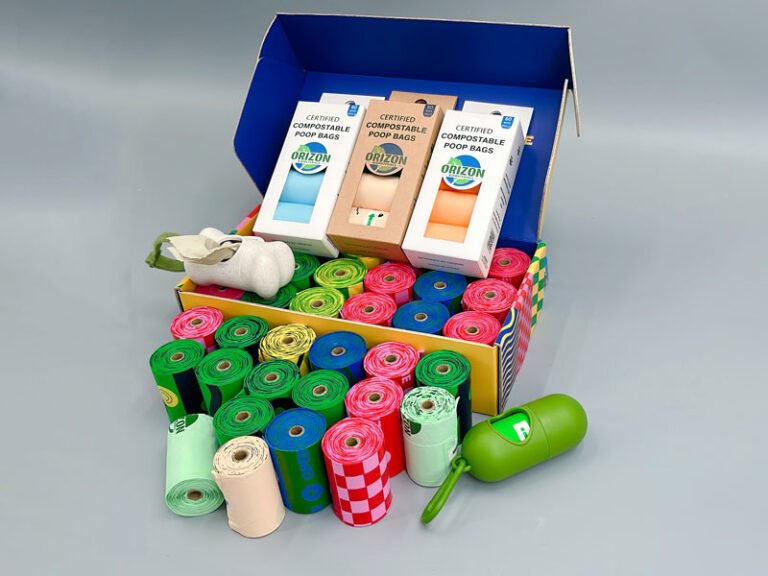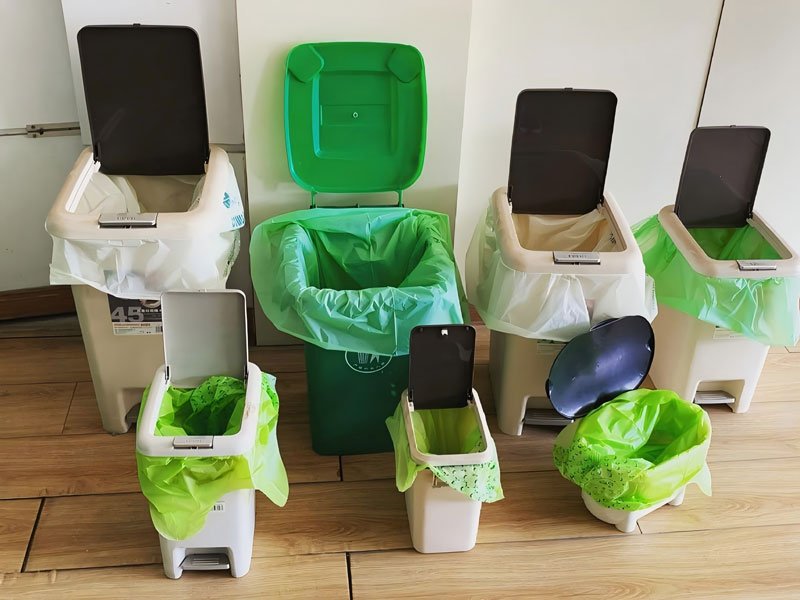In 2025, garbage bags are no longer just about holding waste—they must be durable, eco-conscious, and affordable. Whether you're managing household waste, kitchen scraps, or looking for compostable options, we've rounded up the best garbage bags to suit every need.
In this article, we’ve reviewed top-performing garbage bags, categorized by use case—kitchen, yard, budget, and sustainable options. We’ve also included a buyer’s guide and answers to frequently asked questions to help you make informed decisions.
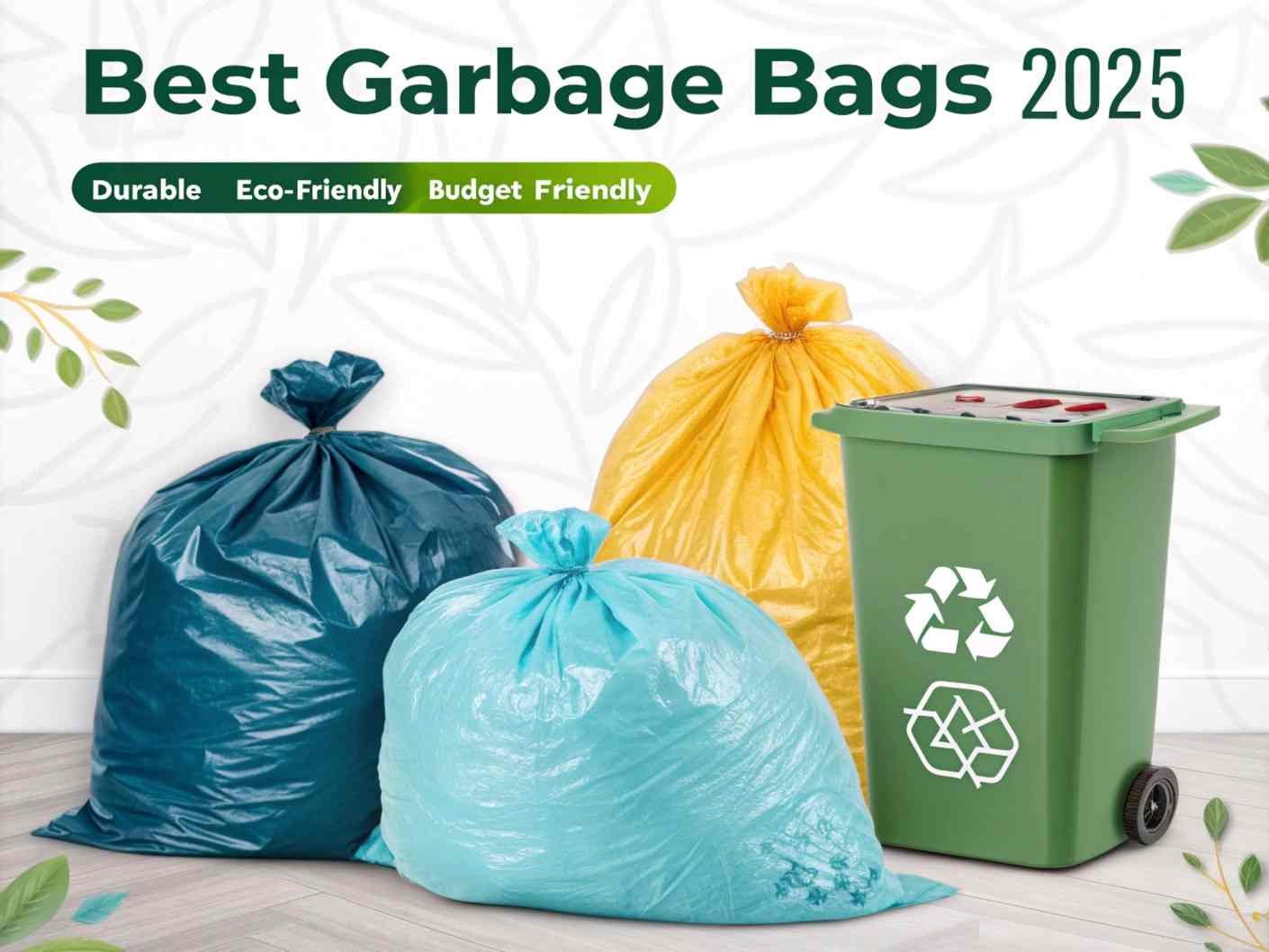
What Are the Best Garbage Bags
The best trash bags depends on the usage requirements, but considering the comprehensive quality, durability and environmental protection, you can refer to the following key points when choosing:
Material and environmental protection: Give priority to garbage bags made of biodegradable materials. Such bags can better return to nature and reduce environmental pollution. When purchasing, you should confirm whether there is an environmental certification mark, such as the EU EN 13432 or the US ASTM D6400 certification, to ensure that no harmful substances remain in the garbage bag after treatment.
Thickness and durability: The thickness of the garbage bag directly affects its durability and load-bearing capacity. The thickness of general household garbage bags is between 10-20 microns, and the thicker ones are more tear-resistant and leak-proof. Garbage bags made of new materials (non-recycled materials) have better strength and are not easy to break even if they are thinner.
Design type:
- Drawstring garbage bag: easy to seal, prevent odor, and not easy to dirty hands when extracting.
- Vest-style garbage bag: with a lifting ear design, easy to tie and carry.
- Flat-mouth garbage bag: cheap, but the sealing requires space to be reserved, suitable for garbage cans with larger capacity.
Size selection: Choose the appropriate capacity according to the size of the trash can and the amount of garbage. Common sizes include 5L~33L for daily household use and 76L~120L for large capacity or commercial use.
Understanding Your Garbage Bag Needs
- Capacity: Most kitchen bins use 13-gallon bags, while outdoor or heavy-duty bins may require 30-55 gallons. Check your bin size to ensure a proper fit.
- Durability: Look for tear-resistant materials and high weight capacity, especially for sharp or heavy waste.
- Odor Control: Scented bags or tight-sealing designs help manage unpleasant smells, ideal for kitchens or infrequent trash pickup.
- Eco-Friendliness: Options include recyclable, plant-based, or compostable bags for reducing environmental impact.
- Price: Balancing quality and cost is key—premium bags may cost $0.30-$0.40 per bag, while budget options can be as low as $0.15.
Common use cases include household kitchens, offices, outdoor cleanup, or eco-conscious homes with composting systems. Let’s explore the top garbage bags that excel in these areas.
Importance of Compostable Trash Bags in 2025
As climate awareness grows, switching from traditional plastic trash bags to compostable alternatives can help reduce microplastic pollution and greenhouse gas emissions. Trash bags made from renewable materials such as PLA or PBAT decompose into water, carbon dioxide and biomass under composting conditions.
Did you know? Traditional plastic bags can take up to 500 years to degrade, while certified compostable trash bags only take 90-180 days to decompose in industrial composting facilities.
Top Garbage Bag Recommendations for 2025
Best Overall Garbage Bag: Orizon Bio 13 Gallon
Made from PLA+PBAT bioplastics and certified by BPI and EN13432, Orizon’s kitchen garbage bags are a perfect blend of strength and sustainability. These biodegradable liners are tear-resistant and fit most standard kitchen trash cans.
- Materials: Cornstarch-based compostable film
- Certifications: BPI, OK Compost, EN13432
- Ideal for: Home kitchens, compost collection, eco-friendly households
Why we love it: Unlike many flimsy compostable options, these bags hold up to 10kg of waste without leakage or tearing.
Best Yard Waste Bag: GreenGuard UltraStrong 30 Gallon
This heavy-duty trash bag is designed for outdoor use. Made with 3-ply polyethylene, it handles sharp twigs, moist leaves, and even broken branches without ripping.
- Material: Extra-thick plastic
- Strength: Rated to hold over 20kg
- Ideal for: Yard cleanup, landscaping waste, construction debris
Note: Not compostable, but perfect for bulk waste management.
Best Compostable Kitchen Bags: BioBag Food Waste Liners
BioBag offers 100% compostable small-size liners perfect for countertop food scrap bins. These biodegradable garbage bags meet the ASTM D6400 standard and work well in municipal compost systems.
- Size: 3 gallon
- Certifications: BPI, USDA Certified Biobased
- Strength: Moderate; best for wet organic waste only
Best Budget-Friendly Option: EcoFlex Tall Kitchen Bags
Looking for an eco alternative that won’t break the bank? EcoFlex bags are made from partially recycled materials, offering flexibility and decent strength at a lower price point.
- Material: Mixed plant-based plastic + recycled resin
- Strength: Medium
- Compostable: Yes, under commercial conditions
- Best for: Everyday kitchen trash
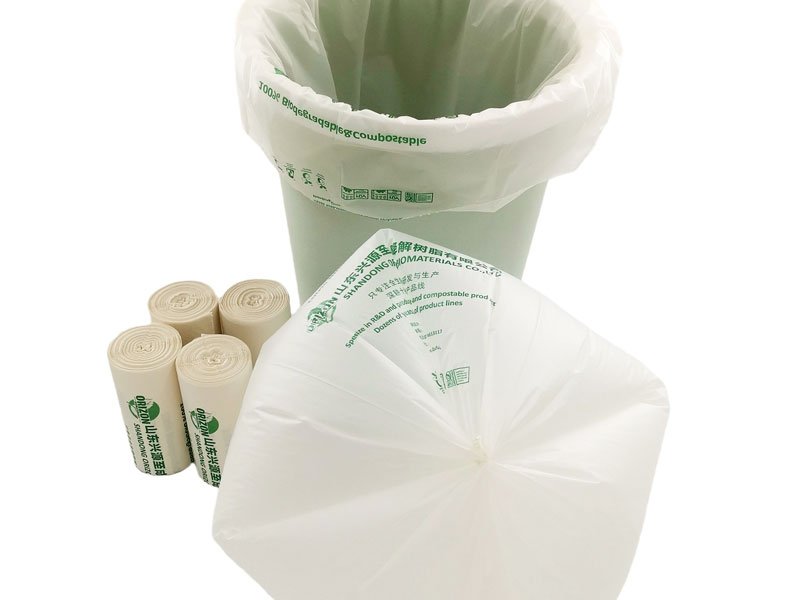
Best Eco Friendly Trash Bag Standards:
- Appearance quality: Check whether there are bubbles, perforations, cracks, wrinkles and other defects on the surface of the garbage bag to ensure that the whole is uniform and undamaged.
- Thickness detection: Measure the physical thickness of the garbage bag. The thickness directly affects the strength and durability of the bag. Generally, the greater the thickness, the stronger the load-bearing and puncture resistance.
- Tensile strength and elongation at break: Test the strength and ductility of the garbage bag when stretched, reflecting its durability and tear resistance.
- Fat fall impact quality: Evaluate the impact resistance of the material. Increased thickness usually enhances the impact resistance.
- Heat seal strength: Measure the bonding strength at the seal of the garbage bag. The higher the seal strength, the less likely it is to crack and leak.
- Drop performance: Simulate the garbage bag filled with items falling from a certain height to detect whether it is broken or leaking to ensure safe use.
- Leakage performance: Test whether the garbage bag will leak when filled with liquid, especially important to prevent pollution when containing liquid garbage.
- Environmental performance: Detect whether the material of the garbage bag meets environmental protection standards, whether it is degradable or non-toxic, and reduce the environmental burden.
- Load-bearing capacity: The actual load-bearing weight is tested to ensure that the garbage bag can meet the use requirements and is not easy to break.
- Size specification: Choose the appropriate size according to the use scenario to ensure that it matches the garbage can for easy use and handling
How to Choose Best Trash Bags :
1. Type of Waste
- Food scraps: Use compostable or biodegradable liners (e.g., PLA-based or cornstarch bags).
- Heavy trash: Choose thick plastic or high-density polyethylene (HDPE).
- Yard waste: Look for 30+ gallon capacity and reinforced seams.
2. Bag Size & Fit
Matching your trash can is key. Common sizes:
- 3 gallon: Countertop bins
- 13 gallon: Kitchen use
- 30-33 gallon: Yard or commercial trash
3. Strength & Thickness
Measured in mils or microns. More thickness = higher resistance to punctures and tears.
- < 0.9 mil: Light waste
- 1.0–1.2 mil: General household use
- 1.3+ mil: Yard or commercial
4. Eco-Friendliness
If sustainability is a priority, opt for bags with these labels:
- BPI Certified
- OK Compost (TÜV Austria)
- EN13432 Compliant
Tips for Garbage Bag Use
- Match Bag to Bin Size:
- Measure your bin’s height and width, adding a few inches for overhang. A 13-gallon bag typically fits 10-15-gallon kitchen bins.
- Maximize Eco-Friendliness:
- Dispose of compostable bags in designated compost facilities, not landfills, to ensure proper decomposition.
- Increase recycling and composting to reduce reliance on plastic bags.
- Save on Costs:
- Watch for sales on Amazon, Walmart, or Home Depot (e.g., Hefty 110-bag packs drop to $11.70 during promotions).
- Buy in bulk for frequent use to lower the per-bag cost.
- Prevent Leaks and Odors:
- Double-bag heavy or wet waste to avoid spills.
- Clean bins regularly with disinfectant to minimize lingering smells.
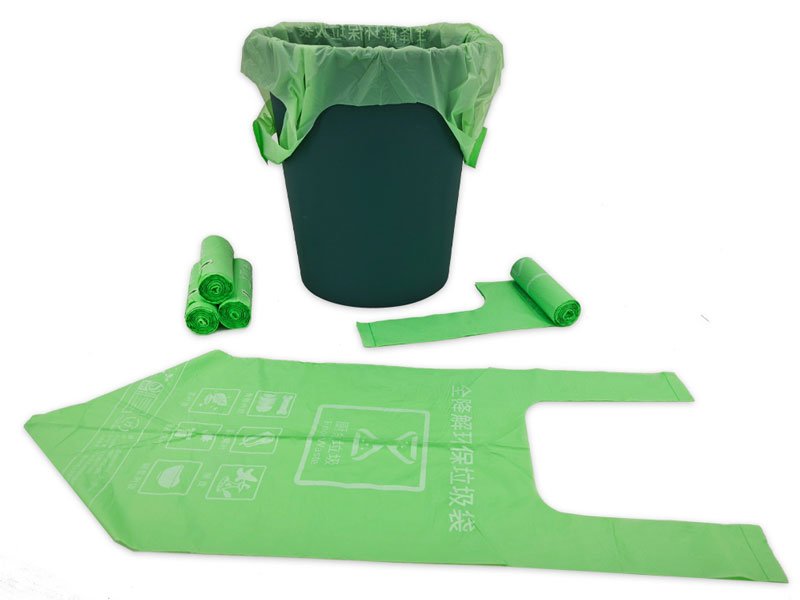
Conclusion
In 2025, choosing the best trash bag depends on your specific needs. For kitchen use, the Orizon 13-gallon trash bag combines performance with an eco-friendly design. For yard waste or heavy-duty trash, the GreenGuard UltraStrong offers unmatched durability. For those looking to reduce their carbon footprint, compostable trash bags like the BioBag or EcoFlex are responsible choices.
Whether you’re a homeowner, office manager, or sustainability officer, there’s a trash bag that fits your values and waste needs. Make your next purchase count—for your home and for the planet.
FAQs
1. Are compostable garbage bags truly biodegradable?
Yes, certified compostable bags are made to break down completely under composting conditions, leaving no toxic residues.
2. Can I use compostable bags in my kitchen bin?
Absolutely. They function just like traditional liners but should be removed regularly to prevent premature breakdown in moist environments.
3. What’s the best garbage bag for outdoor cleanup?
For heavy or sharp debris, a 30+ gallon heavy-duty plastic trash bag like GreenGuard UltraStrong is ideal.
4. Do compostable bags work in home compost bins?
Some do, especially smaller PLA or PBAT liners. However, industrial composting is more effective for full breakdown.
5. Are biodegradable bags the same as compostable ones?
Not always. "Biodegradable" means a product will break down eventually, but it may leave microplastics. "Compostable" means it degrades fully into safe compost.






